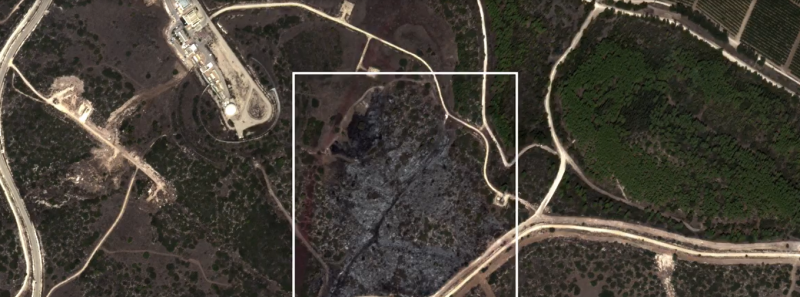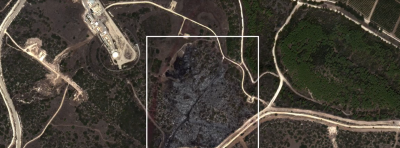The "New York Times" revealed that a rocket launched by Hamas militants during their attack on Israel on October 7 struck an Israeli military base, where experts state that several nuclear-capable missiles are stationed, according to a visual analysis conducted by the newspaper on the repercussions of the attack. Although the rockets themselves did not hit, the impact on the "Sdot Micha" base in central Israel resulted in a fire that approached missile storage facilities and other sensitive weapons. Israel has never acknowledged the existence of its nuclear arsenal, although Israeli whistleblowers, U.S. officials, and satellite imagery analysts all agree that the country possesses at least a small number of nuclear weapons. Hans Kristensen, director of the Nuclear Information Project at the Union of Concerned Scientists, told the Times that he estimates there are likely between 25 to 50 Jericho missile launchers with nuclear capability at the base. According to experts and declassified U.S. government documents, Israeli Jericho missiles are equipped to carry nuclear warheads. Kristensen, who studied the base, indicated that these warheads are likely stored separately away from the base, thus were not threatened during the attack.
The previously unreported attack on "Sdot Micha" is the first known instance of Palestinian militants striking a site suspected of containing Israeli nuclear weapons. It remains unclear whether they were aware of the specific details of what they were targeting, beyond the base being merely a military facility. However, targeting one of Israel's most sensitive military sites demonstrates that the scope of the October 7 attacks may have been greater than previously understood — and that rockets could penetrate airspace around heavily guarded Israeli strategic weapons.
The attack on the area surrounding "Sdot Micha" involved a series of rockets over several hours, according to warning alert data. It is unclear how many rockets were intercepted by the Israeli Iron Dome air defense system or how many managed to infiltrate and strike the base, in addition to the rocket identified by the Times. An Israeli military spokesperson declined to comment on the Times' findings. However, since October 7, it appears that Israel has recognized the threat of rocket attacks on Sdot Micha and has responded accordingly. Recent satellite images show that new earthen barriers and shields have been constructed around military sites near where the rocket fell, seemingly to defend against shrapnel or debris from future attack explosions.
Other evidence of the attack can be found in publicly available satellite images, missile alert logs, and social media posts, which also revealed efforts to control wildfires ignited by the fallen rocket. The rocket landed within the base's perimeter, located about 25 miles northeast of Gaza and 15 miles west of Jerusalem, around 10 AM. It struck a small valley adjacent to a missile facility in Jericho, a large radar system, and an air defense battery. The explosion quickly ignited a fire in the dense, dry trees.
According to the University of Maryland's database that tracks attacks on nuclear facilities, there have been only about five known strikes globally on bases containing nuclear weapons in the past. However, due to the secrecy inherent in nuclear weapons, the exact number may never be publicly known. Nonetheless, Gary Ackerman, one of the researchers who created the database, stated that the attack was unique in nature. He added, "This is not something that happens every day."
Typically, Hamas and other armed Palestinian groups launch rockets at towns and cities relatively close to Gaza. Indeed, they had fired thousands of shells at these sites on that day. The "Sdot Micha" base, established in 1962 and clearly visible on public satellite imagery, spans thousands of acres of rolling hills. While rockets fired by militants in the Gaza Strip may be inaccurate, it is unlikely that Sdot Micha was hit by chance. There are virtually no other targets—besides sensitive military installations—within two miles of the rocket's impact site. There are also few significant non-military targets in the larger area due to its sparsely populated nature.
Although the fire consumed nearly 40 acres of the base, weapons and equipment remained secure. The flames stopped about 1,000 feet from the nearest suspected missile facility in Jericho but came within 400 feet of a large radar system built on a hill at the base, according to the Times' analysis of satellite images. Kristensen noted that even if the flames reached the missiles, their underground storage facilities are designed to withstand damage. However, he pointed out the inherent risks of a fire of this magnitude near fuel and ammunition depots.




